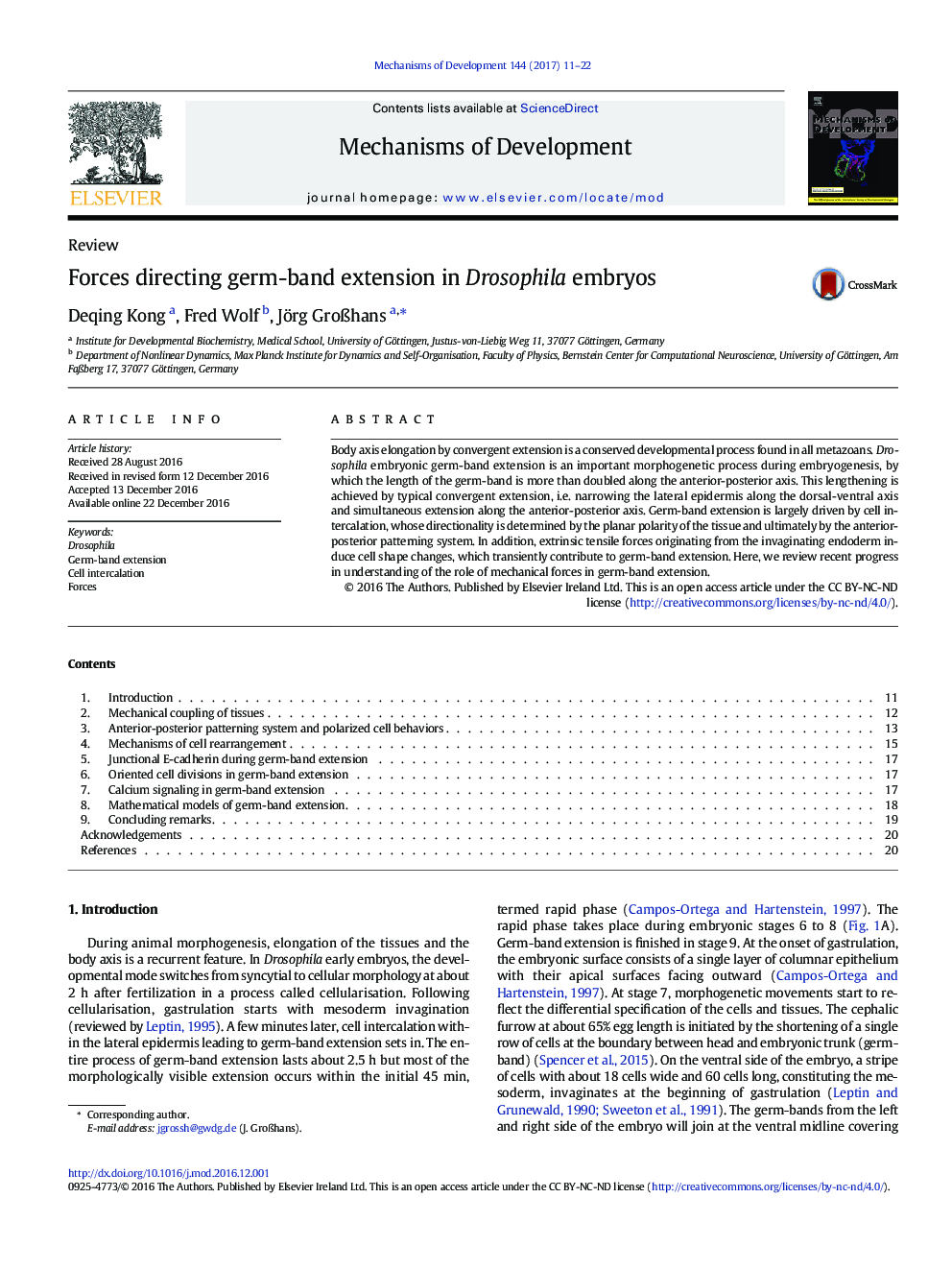| Article ID | Journal | Published Year | Pages | File Type |
|---|---|---|---|---|
| 5533966 | Mechanisms of Development | 2017 | 12 Pages |
â¢Germband extension in Drosophila embryos has served as a paradigm for body axis elongation.â¢Studies during the last decade have revealed mechanisms driving cell rearrangement.â¢Studies have revealed a central role of mechanical forces in germband extension.
Body axis elongation by convergent extension is a conserved developmental process found in all metazoans. Drosophila embryonic germ-band extension is an important morphogenetic process during embryogenesis, by which the length of the germ-band is more than doubled along the anterior-posterior axis. This lengthening is achieved by typical convergent extension, i.e. narrowing the lateral epidermis along the dorsal-ventral axis and simultaneous extension along the anterior-posterior axis. Germ-band extension is largely driven by cell intercalation, whose directionality is determined by the planar polarity of the tissue and ultimately by the anterior-posterior patterning system. In addition, extrinsic tensile forces originating from the invaginating endoderm induce cell shape changes, which transiently contribute to germ-band extension. Here, we review recent progress in understanding of the role of mechanical forces in germ-band extension.
